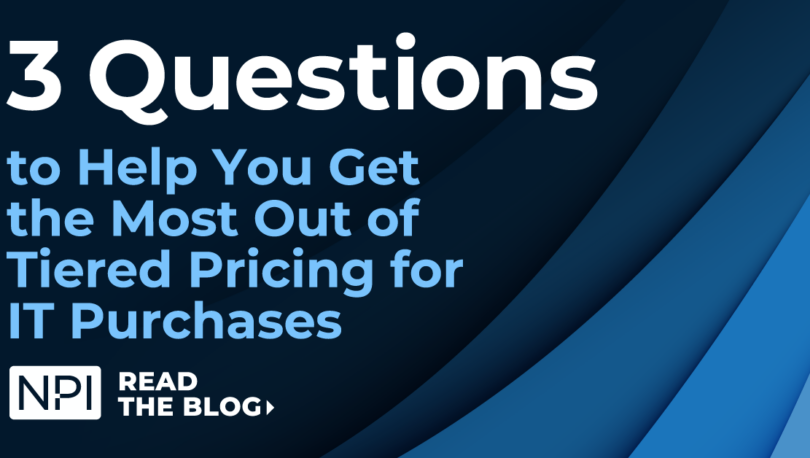NPI observes a lot of mistakes in IT vendor price quotes. Over the years, these (mistakes) have ranged from inaccurate quantities and incorrect part numbers to things like “free” equipment or licensing that was never discussed. What do they all have in common? They typically benefit the vendor’s bottom line. Hand in hand with these instances are errors in tiered pricing.
Here is a recent client example. After closer inspection of a routine software transaction, the client sensed pricing was “a little off” and wanted a second opinion. NPI’s analysts concluded the client was being charged more than list price – and not by a marginal amount. The pricing was so off base that NPI inquired further: Was this a renewal or a new purchase? If a renewal, what was the client’s prior pricing? Were they changing quantities? Upon reviewing the prior renewal, the answer became clear. The vendor had priced the agreement using the wrong pricing tier – one that drastically (and incorrectly) increased the deal pricing.
Many endpoint or end-user-based subscription models are subject to tier-based pricing. As the customer increases volumes, the per-user or per-endpoint pricing is programmatically reduced. The difference between pricing tiers can be so significant that a customer with a large deployment may pay 50% less than a customer with a smaller deployment. Fortunately, there are some levers that can be used to ensure you are using tiered pricing to maximum advantage.
Which Products Count Towards Your Pricing Tier?
Customers often consume different volumes of highly-related products – for instance one for user endpoints and another for servers. Some vendors will allow you to consolidate those volumes rather than separating them out when designating the appropriate tier. In the case of the client example above, the vendor had decoupled previously qualifying products which bumped the customer into a less favorable pricing tier. Following NPI’s SKU-level analysis and negotiation guidance, the vendor corrected the quote thereby saving the client hundreds of thousands of dollars.
If You Plan to Ramp Up Volume, How Can You Leverage Deployment Velocity Now?
If you are starting off with a lower volume due to a rollout schedule but will be ramping into higher volumes within a brief period, some vendors will price the client into the higher tier from the onset of the agreement. It is important to understand – and leverage – your deployment velocity for any headroom quantities including in your purchase.
Have You Optimized Your Discount?
Once a client is confident that they have been priced into the correct tier, the real fun begins. At this stage in the negotiation, the focus is on securing world-class discounts. There are many dynamics to be considered that will factor into the outcome of vendor negotiations. Here are a few:
- Are you subscribing for one year or more?
- Are you prepaying or paying annually?
- Is there a clause for cancellation in the agreement, or are you bound to the long-term agreement as long as there is not a breach of service?
All these decisions (and many others) have a direct impact on the discounting a client will receive from the vendor. Some vendors have programmatic discounts based on these criteria, while others consider them in an ad hoc fashion. Customers must do their homework to determine if the vendor is quoting the best price possible and where they are negotiable. This is even more important if you are working with a reseller. Not every reseller fully understands the ins and outs of specific vendor programs and that lack of knowledge could cost you. Engaging vendor-specific expertise for IT price benchmark analysis and license optimization ensures you have access to the latest pricing and negotiation intel.
If you want to ensure you’re paying the lowest possible price for enterprise IT purchases and renewals, NPI can help. Reach out to us to learn more.
RELATED CONTENT
- Blog: What You Need to Know About IT Contract Renewals and the Consumer Price Index (CPI)
- Blog: Advice From the Experts: Enterprise Software Cost and License Optimization Must-Do’s
- Bulletin: 10 Reasons Why IT Buyers Should Perform Price Benchmark Analysis
- NPI Service: IT Price Benchmark Analysis & Contract Negotiation Intel
